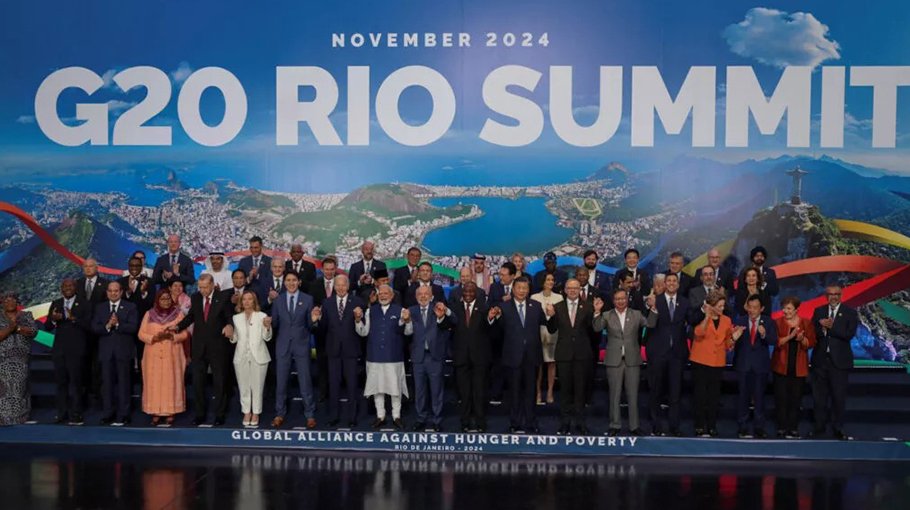Informal global leadership can help steady the ship

All evidence suggested that Brazil’s G20 Summit was going to be an exceptionally difficult summit for the United States and its departing President Joe Biden — and it proved to be so with the US President appearing as all too evidently a ‘lame duck’ and the shadow of Biden’s successor, Donald Trump, all too evident in leaders’ discussions.
It has been a busy period for the informal international forums (‘Informals’). The Asia-Pacific Economic Cooperation (APEC) met in Peru on 15–16 November, followed immediately by the G20 Leaders’ Summit in Brazil on 18–19 November. If these two summits were not enough, the BRICS+ Summit ran in Kazan, Russia on 22–24 October and the East Asia Summit also met in October. Leaders and their ministers have had significant opportunities to engage with other heads of government and state.
The question is whether these summits advanced global governance policies or handled the current international context rife with geopolitical tensions built on the back of conflicts in the Middle East and in Europe, US–China strategic competition and the growing populist and illiberal governments challenging the liberal order? The influence of Informals — especially the G20 but to varying degrees the G7, BRICS, APEC and the many minilaterals such as the US–Japan–South Korea and China–Japan–South Korea trilateral frameworks — may grow in the increasingly fragmented global order.
The role of Informals has evolved before. Following the eruption of the 2008 Global Financial Crisis, there was discussion among experts about whether the just created G20 Leaders’ Summit was a ‘crisis committee’ or a ‘steering committee’. In either case, it was presumed to be a capable of generating collective efforts of these key countries. There was strong approval of the G20 efforts to tackle the financial crisis and most observers would agree that their collective efforts aimed at the time in getting past the financial crisis.
There was a tendency, naturally, to hone in on the collective G20 leaders’ efforts in the years that followed. The G20 announced efforts to coordinate among its 19 countries and the European Union — and now the African Union — with statements of implementation and agreed coordinated efforts expressed in very lengthy leaders’ communiques or declarations. Yet there was limited implementation by national governments and the international organisations.
The hope was then that the annual gatherings of G20 leaders would allow leaders to finalise collective efforts to make globalisation work for all and to provide a setting where advances could be secured for critical global issues like institutional financial reform, debt management and climate financing. These meetings also sought to achieve collective agreement to press forward on the Sustainable Development Goals unanimously approved at the United Nations in 2015. But little of any of this was concluded.
The annual leaders’ gatherings, especially the G20, have provided at least valuable opportunities for leaders to reach beyond the collective gathering and arrange highly helpful bilateral meetings. For example, the 2023 APEC Summit in San Francisco enabled Chinese President Xi Jinping and US President Joe Biden to meet on the margins. This bilateral meeting is widely recognised as stabilising US–China relations and reopening various lines of communication, including military-to-military communication that had been suspended following the visit to Taiwan by then speaker of the House of Representatives Nancy Pelosi.
At the 2024 Peru APEC Summit, the two leaders met again. In the fading days of his presidency, Biden hoped to advance US–China relations. While the leaders were able to publicly express the hope for further cooperation, and there was agreement to maintain human control over nuclear weapons, the shadow of incumbent US president Donald Trump’s return clearly cooled the opportunities for further advancing efforts and left Xi warning over Taiwanese independence and other ‘red lines’.
Besides serving as the setting for leaders of the two leading powers to talk, the Peru APEC meeting also provided the setting for other leaders to hold critical meetings. One clear instance was Japanese Prime Minister Shigeru Ishiba and South Korean President Yoon Suk-yeol. The two leaders held their second meeting in just over a month and enabled the two leaders to discuss the threat posed by recent North Korean efforts. They also pledged to continue ‘shuttle diplomacy’. Given the fraught relations between the two countries the meetings proved quite valuable.
The annual informals have created it seems numerous instances of leaders ‘huddling’ together, which has aided diplomacy. These diplomatic instances should not be underestimated, with the G20 representing two-thirds of the world’s global population and 85 per cent of global GDP. Further, the G20 gathering in Brazil will have created space for various leader discussions on the eve of Trump’s return. Future gatherings at these summits may prove to be even more critical as opportunities to collaborate on trade, finance or climate in the face of Trumpian chaos will be difficult to come by otherwise.
While the Informals’ value for the global order it seems is largely in the opportunity for leaders to connect and make diplomatic and security progress, the collective efforts of these gatherings cannot be completely dismissed. They may not support collective policy implementation as was once hoped but these summits do enable leaders — often the host country leaders — to amplify critical policy initiatives.
Alan Alexandroff is Director of the Global Summitry Project and Co-Chair of the China-West Dialogue (CWD).
Source: East Asia Forum



